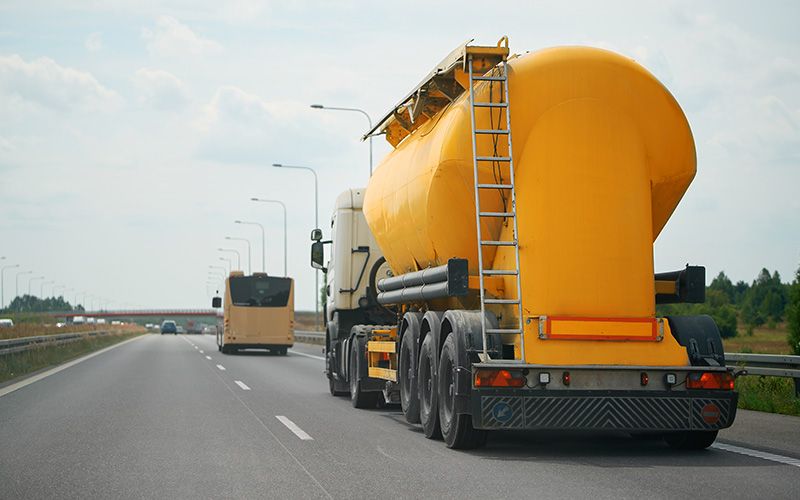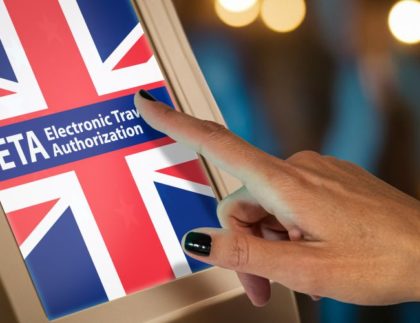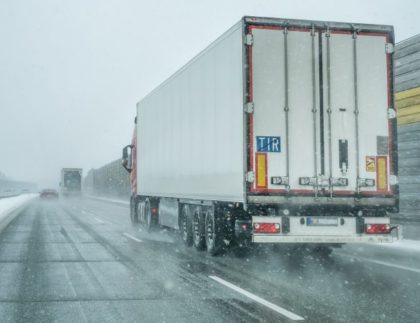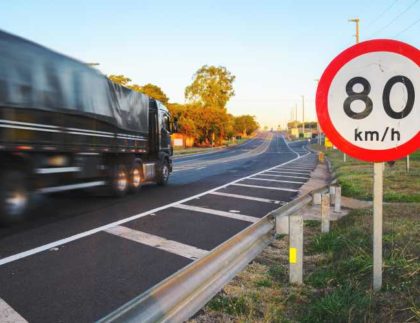

How to minimize risks in ADR transport? The question is asked by any responsible carrier and driver dealing with materials classified as hazardous. Rightly so: even though the transportation of hazardous materials is a daily occurrence for many companies, there is no room for error with this type of order.
In this article, you’ll read how to minimize ADR risks based on current guidelines, route experience and the reality of working with customers who demand the highest safety standards. You will also learn what documentation must be present in the vehicle cabin. Safety starts with knowledge, so please keep reading.
What are dangerous goods and what risks do they pose?
Dangerous goods are substances or objects that, due to their properties, can pose a threat to human life and health and to the environment. Such materials are classified according to the provisions of ADR, an international agreement from 1957. Currently, more than 50 countries from around the world have ratified the ADR Convention.
What counts as dangerous goods? They include:
- gases (e.g., propane cylinders),
- flammable liquids (e.g., fuels),
- toxic and infectious substances (e.g., industrial chemicals, medical waste),
- radioactive materials (e.g., isotopes for medical applications),
- corrosive substances (e.g. acids),
- explosives (e.g., fireworks),
- chemical waste.
Transporting hazardous materials is a huge responsibility. The transportation of hazardous cargo can lead to fires and explosions (e.g., due to collisions or improper storage), environmental contamination (if chemicals leak into the soil or water), or poisoning of humans and animals. Another source of threat may involve technical failures, such as corrosion of components by corrosive substances. That’s why it is so important to properly secure ADR transport and providing driver training.
What classes of dangerous cargo are distinguished by the ADR agreement?
The ADR agreement distinguishes 9 main classes of dangerous cargo that relate to different types of hazards:
- class 1 – explosives,
- class 2 – gases,
- class 2 – flammable liquids,
- class 4 – dangerous solids,
- class 5 – oxidizing substances and organic peroxides,
- class 6 – toxic and infectious substances,
- class 7 – radioactive materials,
- class 8 – corrosive substances,
- class 9 – miscellaneous dangerous substances and objects.
What are the carrier’s responsibilities in the transportation of dangerous goods?
The role of the carrier does not end with the responsibility to realize the order. A carrier that undertakes the transportation of dangerous goods must act in accordance with the requirements set by ADR regulations, and failure to comply with these obligations leads to serious financial and legal consequences.
Before the goods are put on the vehicle, the carrier is obliged to make sure they are classified correctly. It is also necessary to verify the necessary documentation and inspect the security of the goods and the vehicle itself (including warning plates and stickers). Violation of ADR regulations prevents the vehicle from being allowed to complete the order. What’s more, if any irregularities – such as leaking packaging or various types of malfunctions – are discovered in the course of transportation, the transport must be stopped immediately.
What documents must the driver have?
Complete and up-to-date documentation is an absolute must. A driver who performs ADR transport must have the following in the cab of the vehicle:
- ADR certificate, which confirms training that allows drivers to transport hazardous materials,
- consignment note, which contains all the required information about the cargo being transported,
- instructions for the driver regarding ADR goods, as well as how to deal with emergencies,
- driving license.
In addition, when transporting goods assigned to Class 1 (explosives), an additional special permit is required. A dangerous goods vehicle approval certificate is also required, which applies to tank trucks and, again, the transportation of certain explosive and self-reactive materials and items.
What vehicle markings are required?
Any vehicle involved in the transportation of dangerous goods must be properly marked. These are the elements required by ADR regulations that are necessary to identify the type of hazard – for example, by emergency services in the event of an accident. It is thanks to these markings that you know what kind of danger you are dealing with – even when documents are not available.
The basic signage is orange warning signs, which must be located on the front and rear of the vehicle. The upper field of the plate contains the hazard identification number (e.g. 23 – flammable gas), while the lower field – the UN number of the substance (e.g. 1203 – gasoline). The board must be non-reflective, but highly visible both day and night, as well as weatherproof. Another important marking are diamond-shaped warning stickers, with dimensions at least 10 cm by 10 cm. They have distinctive colors and a graphic symbol, depending on the class of hazardous material.










